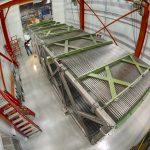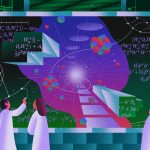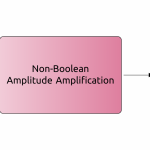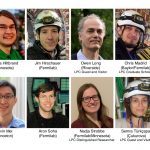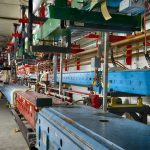From Wired, July 16, 2023: The use of a machine learning tool known as sparse convolutional neural network is now being used by researchers to accelerate real-time data analysis. SCNNs have been used in simulations of the data expected from DUNE and analyzed the simulated data faster than ordinary methods while requiring significantly less computational power.
machine learning
Whether in Serbia or Chicago, Fermilab postdoctoral researcher Aleksandra Ćiprijanović is working to unlock the secrets of the night sky. As a member of the Deep Skies Lab, an international collaboration of physicists, she’s figuring out how to use artificial intelligence and machine learning to better handle the huge amounts of data needed for discovery science.
From AI Business, June 16, 2021: Fermilab was part of a consortium helping in the development of the TinyML benchmark from MLCommons to measure machine learning performance that will bring intelligence to devices like wearables, thermostats, and cameras.
To fully realize the potential of quantum computing, scientists must start with the basics: developing step-by-step procedures, or algorithms, for quantum computers to perform simple tasks. A Fermilab scientist has done just that, announcing two new algorithms that build upon existing work in the field to further diversify the types of problems quantum computers can solve.
U.S. CMS physicists from Fermilab and associated universities collaborating under the umbrella of the LPC make up a team that is the first to perform a new kind of search for “stealthy” supersymmetry that does not result in an obvious signature of large energy imbalance. Instead, the LPC team is looking for collisions that result in an unusually large number of particles in the detector. CMS recently published a briefing explaining their analysis.
Fermilab scientists and engineers are developing a machine learning platform to help run Fermilab’s accelerator complex alongside a fast-response machine learning application for accelerating particle beams. The programs will work in tandem to boost efficiency and energy conservation in Fermilab accelerators.
From The New York Times, Nov. 23, 2020: It might be possible, physicists say, but not anytime soon. And there’s no guarantee that we humans will understand the result. Fermilab Deputy Director of Research Joe Lykken is quoted in this piece on using artificial intelligence to discover laws of physics.


